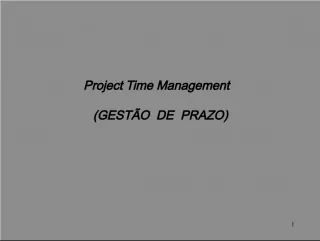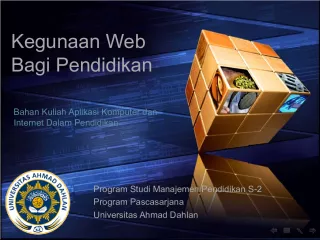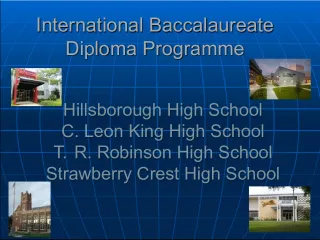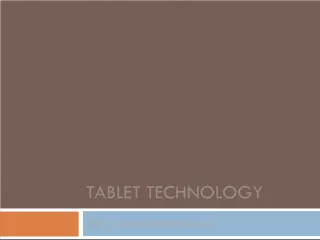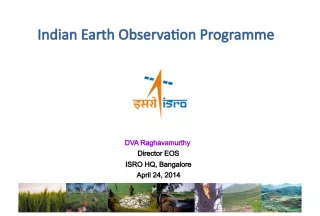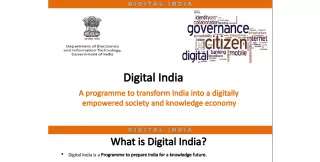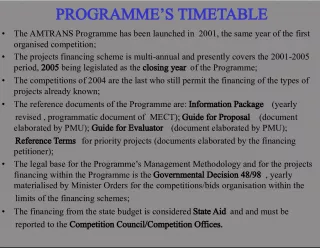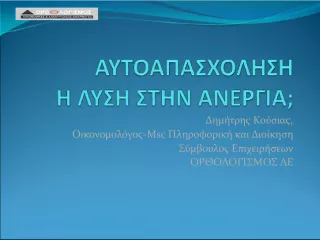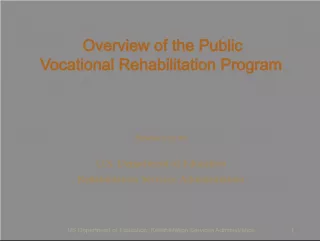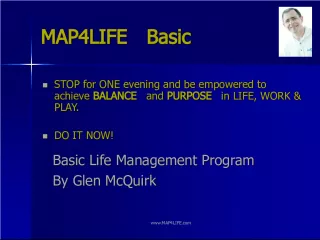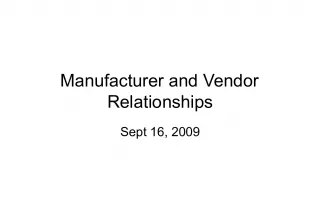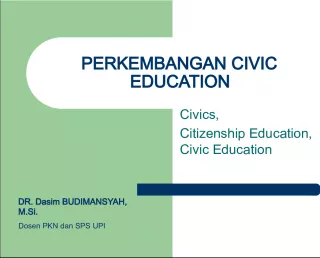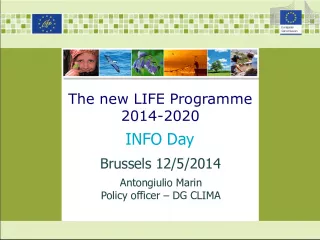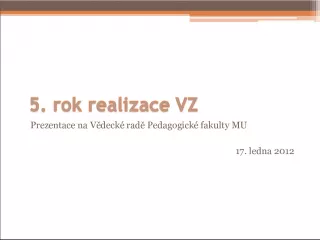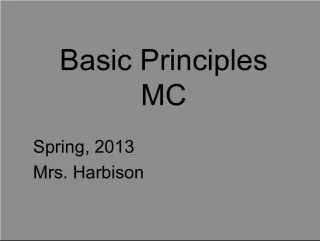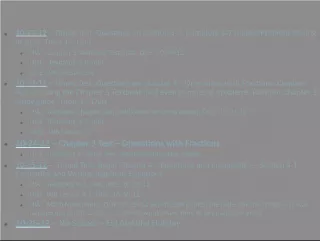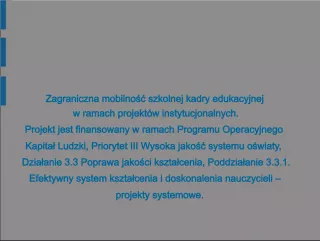Work Programme and Time Schedule for JTAG Boundary Scan Technology Education Program


This document outlines the work programme and time schedule for the implementation of a new education program focused on JTAG Boundary Scan technology in vocational education institutions. The program aims to identify suitable schools for piloting, develop a template for national requirements, and analyze and summarize program requirements.
- Uploaded on | 1 Views
-
 aniyamohr
aniyamohr
About Work Programme and Time Schedule for JTAG Boundary Scan Technology Education Program
PowerPoint presentation about 'Work Programme and Time Schedule for JTAG Boundary Scan Technology Education Program'. This presentation describes the topic on This document outlines the work programme and time schedule for the implementation of a new education program focused on JTAG Boundary Scan technology in vocational education institutions. The program aims to identify suitable schools for piloting, develop a template for national requirements, and analyze and summarize program requirements.. The key topics included in this slideshow are JTAG Boundary Scan Technology, Vocational Education, Piloting, Requirements, Template,. Download this presentation absolutely free.
Presentation Transcript
1. Work programme (01.10.2009.- 31.03.201 1 .) Jnis Smilga Project co-ordinator 10.11.2009.
2. Time Schedule of Work Packages 2009 2010 2011 Cal. month 10 11 12 1 2 3 4 5 6 7 8 9 10 11 12 1 2 3 Project month 1 2 3 4 5 6 7 8 9 10 11 12 13 14 15 16 17 18 WP1 WP2 WP3 WP4 T T T WP5 WP6 WP7 M1 VM M2 M3 VM M4
3. Work Package 1 Selection of suitable vocational education institutions for implementation new education program Expected results: - Profiles of vocational schools that will participate in the piloting - Template for National overview of requirements for vocational education programs - Summary of requirements for vocational education programs Tasks Partner involved 1.Identification of potential users of JTAG Boundary-scan technology education program in vocational educational system P3, P4, P5 2. Selection of vocational education schools that will participate in the piloting (minimum3 institutions from each country) P3, P4, P5 3. Identification of requirements for vocational education programs in each country. P3, P4, P5 4. Development of template for National overview of requirements for vocational education programs P2 5. Analyzing and summaryzing of requirements for vocational education programs P2
4. Work Package 2 Survey and analysis of specific needs for JTAG Boundary scan technology education program in every participating country Expected results - Survey methodology for ICT SME-s needs - Templates for National overview of ICT SME needs for JTAG Boundary scan technology education program content - National overview of potential users needs and specific for JTAG Boundary scan technology education program content in Latvia, Lithuania, Estonia. Tasks Partner involved 1. Development of survey methodology for ICT SME-s needs P0 2. Development of templates for National overview of ICT SME needs for JTAG Boundary scan technology education program content. P0 3. Desk researches about ICT SME-s (as customers for vocational educational schools) in the country. P3, P4, P5 4. Interviews with key persons of ICT SME-s P3, P4, P5 5. Interviews with technological and design specialists of ICT SME-s in order to identify real needs P3, P4, P5 6. Development of National overview of ICT SME-s needs for JTAG Boundary-scan technology education program content. P3, P4, P5
5. Work Package 3 Adaptation of JTAG Boundary scan technology training materials to vocational education programs requirements in every participating country Expected results: - T he Boundary scan technology education program for vocational educational institutions Tasks Partner involved 1. Participation in development of the Boundary scan technology education program P0 2. Training of project partners for using industrial training materials of JTAG Boundary scan technology P1 3. Testing the adapted Boundary-scan technology vocational education program materials P1 4. Evaluation of industrial training materials from pedagogical point of view P2 5. Development of the Boundary scan technology education program for vocational educational institutions P2
6. Work Package 3 Adaptation of JTAG Boundary scan technology training materials to vocational education programs requirements in every participating country Expected results - The Boundary scan Technology education program is adapted to every country needs - The Boundary scan Technology education program basic version is translated in the English - Use guidelines for teachers and pupils Tasks Partner involved 6. Integration of survey results and recommendations in the Boundary scan technology education program P2 7. Adaptation of the Boundary scan technology education program to every country needs P2 8. Translation of the Boundary scan technology education program basic version in the English language P2 9. Development of educational program use guidlines for teachers P2 10. Development of educational program use guidlines for pupils P2 11.Improvement and supplementation of final version of the Boundary scan technology education program in English language after the piloting and evaluation in the vocational educational schools P2
7. Work Package 3 Adaptation of JTAG Boundary scan technology training materials to vocational education programs requirements in every participating country Expected results: - The Boundary scan technology education program translated in 4 languages - The Boundary scan technology vocational education program user guideline in 4 languages - Final version of the Boundary scan technology education program in national languages Tasks Partner involved 12. Technical support during the project P2 13. Translation of the Boundary scan technology education program in the national languages P3, P4, P5 14. Translation of guidlines into national languages P3, P4, P5 15. Testing of language interpretation P3, P4, P5 16. Improvement and supplementation of final version of the Boundary scan technology education program in national languages after the piloting and evaluation in the vocational educational schools P3, P4, P5
8. Work Package 4 Training on the Boundary scan technology education program usage Expected results: - In the training minimum 3 coaches are trained Tasks Partner involved 1. Organization of the local training seminar in each country P0 2. Development of presentation materials P2 3. Training the national partners for using the Boundary scan technology vocational education program and it implementation in vocational educational institutions i n each country P2 4. Supervision of training process for using the Boundary scan technology P1 5. Participation in the training P3, P4, P5
9. Work Package 5 Testing and evaluation of the Boundary scan technology education program in the vocational education schools Expected results: - Evaluation methodology and form - Minimum 3 teachers in each country are trained - Overview of evaluation results in every country Tasks Partner involved 1.Development of evaluation methodology and evaluation form P2 2.Organization of piloting and testing in the selected vocational educational schools P3, P4, P5 3.Collecting and analyzing the results of evaluation P3, P4, P5 4.Providing P2 with recommendations for educational program final improvements P3, P4, P5
10. Work Package 6 Dissemination of the project results Expected results: - The project home page - Publications - The project brochure - Participation in exhibition Tasks Partner involved 1.Development of the project home page and maintenance of the home page P2 2. Development of the project brochure P2 3. Dissemination of all actual information through media, internet, public events etc. P2, P3, P4, P5 4. Inserting information about project in the organizations home pages P0,P2,P3, P4, P5 5. Printing of project brochure for dissemination P3, P4, P5 6. Participation in educational exhibition P2
11. Work Package 7 Project management Expected reports: - Project management - Project reporting methodology - Progress and financial reports - Meetings Tasks Partner involved 1. O verall coordination of the projec P0 2. M onitoring and supervision of the implementation of the project P0 3.D evelopment of project reporting methodology P0 4. development of the overall project progress and financial reports P0 5. Organization of project management meetings ( 4 presence meeting s and 2 virtual meetings via the internet) P0 6. C oordination of the project implementation in the partner organisation and country P1, P2, P3, P4, P5 7. D evelopment of project progress and financial reports of partner organisatio P1, P2, P3, P4, P5 8. P articipation in the project management meetings P1, P2, P3, P4, P5
12. Thank you for your attention!

